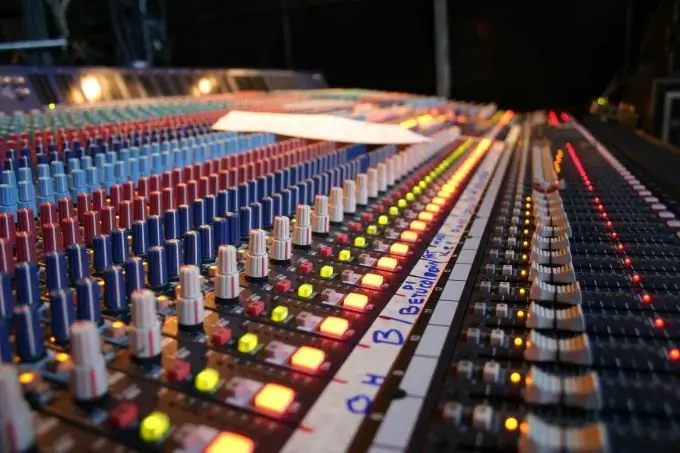You may come across several different types of microphones. They differ in design and in the principle of converting sound vibrations. Electrodynamic and electrostatic microphones can be distinguished as of better quality. Electrodynamic microphones include reel and ribbon microphones, while electrostatic microphones are condenser and electret microphones.

Instructions
Step 1
If you're setting up a studio, it's best to choose a condenser microphone, even though it needs an external power supply. Do not try to connect a condenser microphone to your sound card. Please note that when using a condenser microphone, you will definitely have to take care of a special matching device combined with a power supply. All of the above items are included in the mixer. To reduce the influence of acoustic interference, mount the microphone on a stand or stand with a special shock-absorbing suspension.
Step 2
Connect the dynamic microphone directly to the microphone input located on the sound card. Perform the second connection method using the line-in of the sound card. Give preference to the line-in connection, because this way you will get less noise. Use caution when connecting dynamic microphones to a mixer or microphone amplifier that has a phantom power supply that provides the functionality of condenser microphones. Turn off the phantom power supply to avoid damaging the dynamic microphone.
Step 3
If you are going to connect a condenser microphone, use the microphone input of the mixer. Likewise, you can connect a condenser microphone to a microphone amplifier that has a phantom power source. Check the connection between the output of the mixer or the output of the microphone amplifier and the line input of the sound card.
Step 4
If you have problems with electromagnetic interference, connect the microphone to the mixer using balanced connections. In this case, the signal from the microphone to the mixer will be transmitted through a shielded twisted pair of wires. Compare with signal transmission from source to receiver with a shielded single conductor cable. In the version with twisted pair of wires, passing through one wire, the signals are transmitted unchanged. Such signals are also called "hot", "positive" or hot (+ ve). The other wire will transmit the same signal, but in antiphase. Such signals are called "cold", "negative" or cold (-ve). Any wire, even if it is shielded, simultaneously functions as an antenna, and as a result, perceives interference, but the second signal will be subtracted at the mixer input, practically compensating for it.






